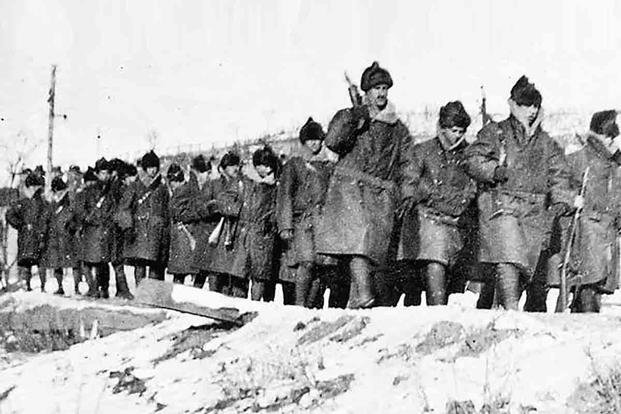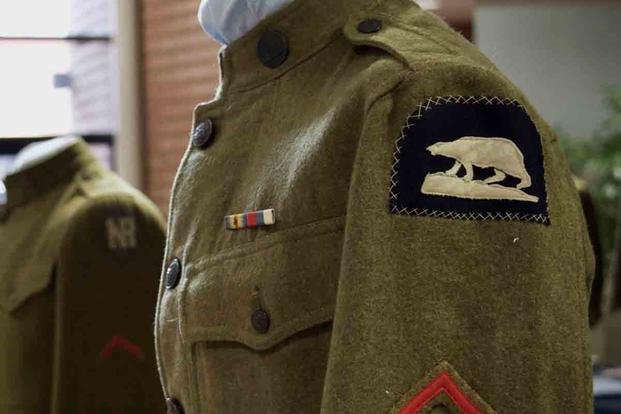Fighting a war in Russia during the winter is never a good idea, and yet time and again, people keep trying. The United States is as guilty of it as Napoleon was.
In November of 1918, much of the world was jubilantly celebrating the end of World War I, the "war to end all wars." As those celebrations caught the attention of newspapers and newsreels all over the United States, there was one group of Americans whose war hadn't yet ended.
Around 5,000 American soldiers were part of an allied expedition to intervene in the ongoing Russian civil war against the "Red" Bolshevik forces. For a little over a year, the American Expeditionary Force in North Russia fought to give the anti-Bolshevik "White" Russians the upper hand.
As summer turned to fall in 1918, the combined forces of Britain, France, Italy, the United States and the rest of their allies were making drastic advances against their World War I enemies. Things were looking bleak for the Central Powers of Germany, Austria-Hungary, the Ottoman Empire and Bulgaria.
In France, the allied forces had pushed the German Army back to the Hindenburg Line, nearly pushing it out of France altogether. Soon, German soldiers and sailors would revolt against the continued war, the Kaiser would be forced to abdicate and an armistice would be negotiated to end the war.
Things were looking good for the allies, but the Russians, who had negotiated a separate peace in March of 1918, were still locked in a brutal struggle for who would control Russia. Britain, France and the United States had sent the Tsar 110,000 new rifles and other war materials to help keep the Russian Empire in World War I. Since the Russian military was unable to distribute any of it, Russia dropped out anyway.
Those arms and supplies were sitting in a warehouse in the northern city of Arkhangelsk. The "Polar Bear Expedition," as the mission had come to be called, was simple on paper. They were to capture the stored weapons and secure an area large enough for the White Russians to form a stable government and army. Neither of those things happened.
The Americans, at the request of the British and French, landed in the city in September 1918. They found the city was already occupied by the British, and they also found that the weapons cache was already discovered by the Bolsheviks, who'd made off with them.
To make matters worse, a force of Czech and Slovak armies called the Czech Legion was in danger of being overrun while fighting along the Trans-Siberian Railway, a front that was hundreds of miles long. The American 339th Infantry, which was largely overcome with Spanish flu, was sent to relieve them.

The Americans, with British help, broke out of the Arkhangelsk perimeter and into Bolshevik territory. For six weeks, they fought their way along the Dvina River, but at the end of it, they found themselves just as stretched out as the Czech Legion. With winter beginning to set in, they had to do something fast.
With the Czech Legion firmly out of reach, the allies tried to raise an anti-Bolshevik army from members of the local population. When winter arrived in force, the allies were without recruits. Then came the Bolshevik counterattack.
In October 1918, the Red armies inflicted a large number of casualties on the Americans, who had expected a relatively calm winter. Instead, the Red assault forced the allies to retreat back toward Arkhangelsk. They were forced to give up all their gains and take a loss of 10% of their force: 110 killed in combat, 30 missing and 70 dead from Spanish flu.
By the time the Polar Bears had secured their position in Arkhangelsk, World War I had ended in an armistice, and the port of Arkhangelsk was frozen over. Even though the war was over, the Americans in Russia would have to survive through the winter until a ship could exfiltrate them.
The soldiers were getting restless, subject to defending an area the size of Texas and Oklahoma alongside Russians who seemed disinterested in the outcome of the battle. The Americans struggled to tell the difference between a Bolshevik and an anti-Bolshevik. All the while, they were inundated by ambushes and Red propaganda, asking: "If the war is over, why are you still here?"

The Red army continued its push against the foreigners throughout the winter. Its new offensive was so successful, the allies decided that their ultimate goal was getting out of there as soon as possible. It wasn't until June 1919 that the USS Des Moines steamed into the port and picked up the Polar Bears.
In all, the Americans lost 344 dead to combat and disease, along with another 305 wounded. They even left 125 men behind. These men wouldn't be returned home until the Veterans of Foreign Wars was allowed to retrieve their remains inside the Soviet Union in 1929.
-- Blake Stilwell can be reached at blake.stilwell@military.com. He can also be found on Twitter @blakestilwell or on Facebook.
Want to Learn More About Military Life?
Whether you're thinking of joining the military, looking for post-military careers or keeping up with military life and benefits, Military.com has you covered. Subscribe to Military.com to have military news, updates and resources delivered directly to your inbox.












